Baihua Shi
Two Power Allocation and Beamforming Strategies for Active IRS-aided Wireless Network via Machine Learning
Jun 09, 2024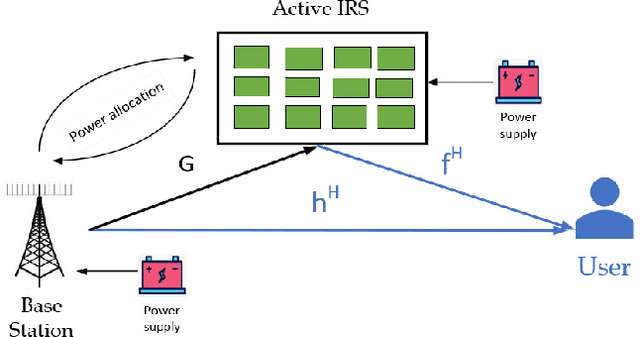
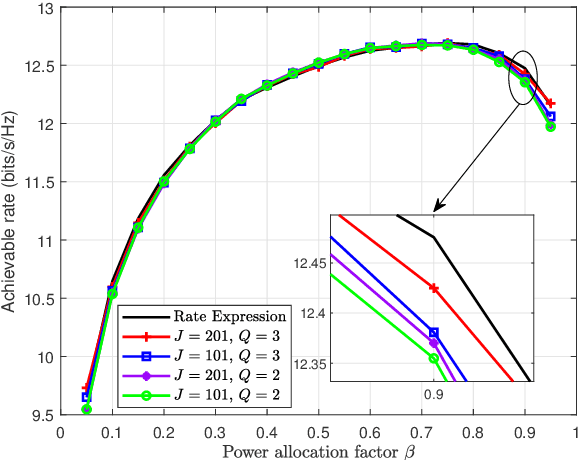
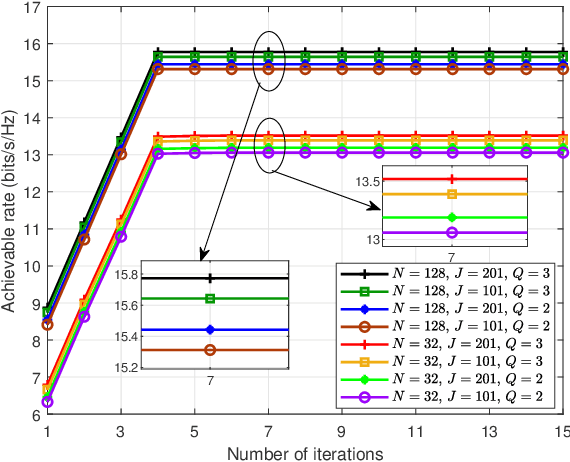
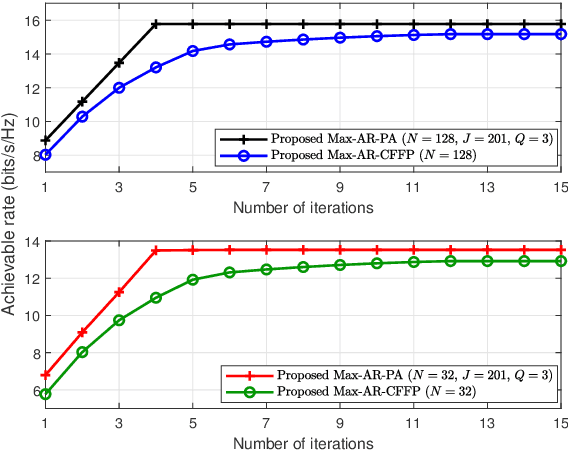
Abstract:This paper models an active intelligent reflecting surface (IRS) -assisted wireless communication network, which has the ability to adjust power between BS and IRS. We aim to maximize the signal-to-noise ratio of user by jointly designing power allocation (PA) factor, active IRS phase shift matrix, and beamforming vector of BS, subject to a total power constraint. To tackle this non-convex problem, we solve this problem by alternately optimizing these variables. Firstly, the PA factor is designed via polynomial regression method. Next, BS beamforming vector and IRS phase shift matrix are obtained by Dinkelbach's transform and successive convex approximation methods. To reduce the high computational complexity of the above proposed algorithm, we maximize achievable rate (AR) and use closed-form fractional programming method to transform the original problem into an equivalent form. Then, we address this problem by iteratively optimizing auxiliary variables, BS and IRS beamformings. Simulation results show that the proposed algorithms can effectively improve the AR performance compared to fixed PA strategies, aided by passive IRS, and without IRS.
STAR-RIS-UAV Aided Coordinated Multipoint Cellular System for Multi-user Networks
May 22, 2023Abstract:Different with conventional reconfigurable intelligent surface (RIS), simultaneous transmitting and reflecting RIS (STAR-RIS) can reflect and transmit the signals to the receiver. In this paper, to serve more ground users and increase the deployment flexibility, we investigate an unmanned aerial vehicle equipped with a STAR-RIS (STAR-RIS-UAV) aided wireless communications for multi-user networks. Energy splitting (ES) and mode switching (MS) protocols are considered to control the reflection and transmission coefficients of STAR-RIS elements. To maximize the sum rate of the STAR-RIS-UAV aided coordinated multipoint cellular system for multi-user networks, the corresponding beamforming vectors as well as transmitted and reflected coefficients matrices are optimized. Specifically, instead of adopting the alternating optimization, we design an iteration method to optimize all variables for both ES and MS protocols at the same time. Simulation results reveal that STAR-RIS-UAV aided wireless communication system has a much higher sum rate than the system with conventional RIS or without RIS. Furthermore, the proposed structure is more flexible than a fixed STAR-RIS and could greatly promote the sum rate.
Low-Complexity Three-Dimensional AOA-Cross Geometric Center Localization Methods Using Massive MIMO Receive Array
Feb 21, 2023



Abstract:Angle of arrival (AOA) is widely used to locate a wireless signal emitter. Compared with received signal strength (RSS) and time of arrival (TOA), it has higher accuracy and is not sensitive to time synchronization of the distributed sensors. However, there are few works focused on three-dimensional (3-D) scenario. Furthermore, although maximum likelihood estimator (MLE) has a relatively high performance, its computational complexity is ultra high. It is hard to employ it in practical applications. This paper proposed two multiplane geometric center based methods for 3-D AOA positioning. The first method could estimate the source position and angle measurement noise at the same time by seeking a center of the inscribed sphere, called CIS. Firstly, every sensor could measure two angles, azimuth angle and elevation angle. Based on that, two planes are constructed. Then, the estimated values of source position and angle noise are achieved by seeking the center and radius of the corresponding inscribed sphere. Deleting the estimation of the radius, the second algorithm, called MSD-LS, is born. It is not able to estimate angle noise but has lower computational complexity. Theoretical analysis and simulation results show that proposed methods could approach the Cramer-Rao lower bound (CRLB) and have lower complexity than MLE.
Deep Learning Based DOA Estimation for Hybrid Massive MIMO Receive Array with Overlapped Subarrays
Sep 11, 2022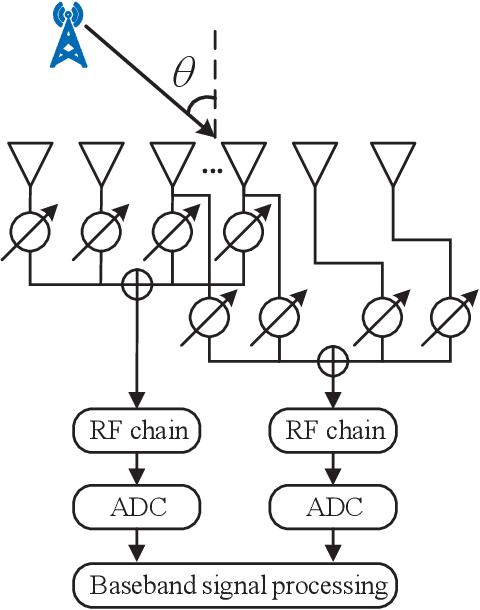

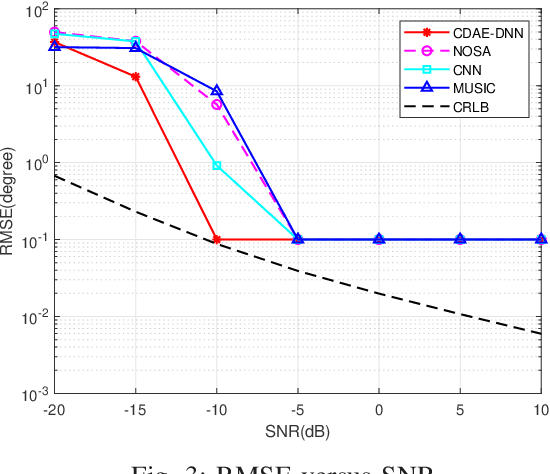
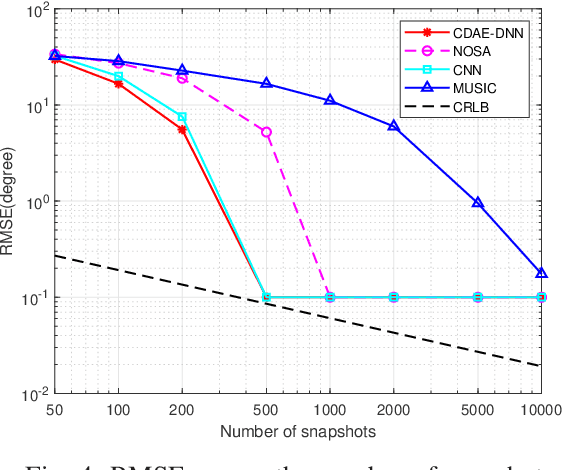
Abstract:To improve the accuracy of direction-of-arrival (DOA) estimation, a deep learning (DL)-based method called CDAE-DNN is proposed for hybrid analog and digital (HAD) massive MIMO receive array with overlapped subarray (OSA) architecture in this paper. In the proposed method, the sample covariance matrix (SCM) is first input to a convolution denoise autoencoder (CDAE) to remove the approximation error, then the output of CDAE is imported to a fully-connected (FC) network to get the estimation result. Based on the simulation results, the proposed CDAE-DNN has great performance advantages over traditional MUSIC algorithm and CNN-based method, especially in the situations with low signal to noise ratio (SNR) and low snapshot numbers. And the OSA architecture has also been shown to significantly improve the estimation accuracy compared to non-overlapped subarray (NOSA) architecture. In addition, the Cramer-Rao lower bound (CRLB) for the HAD-OSA architecture is presented.
Machine-learning-aided Massive Hybrid Analog and Digital MIMO DOA Estimation for Future Wireless Networks
Jan 12, 2022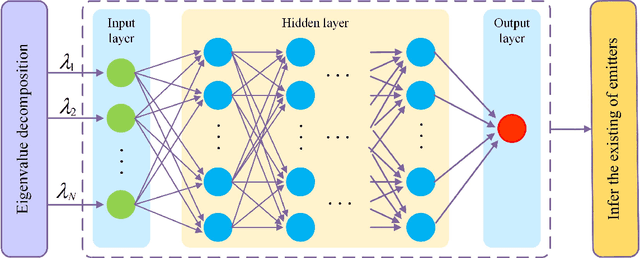
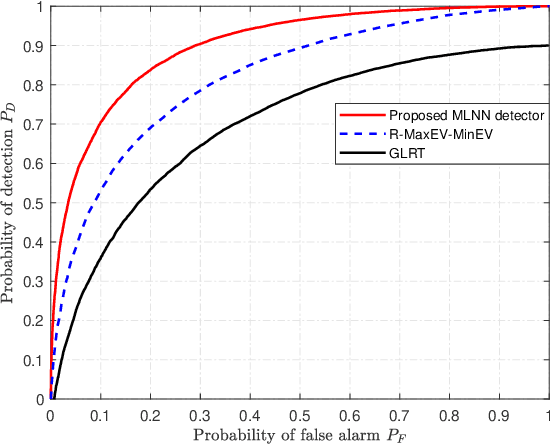
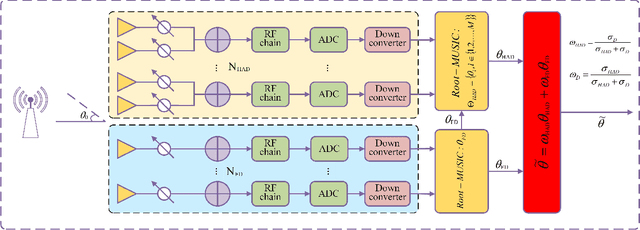
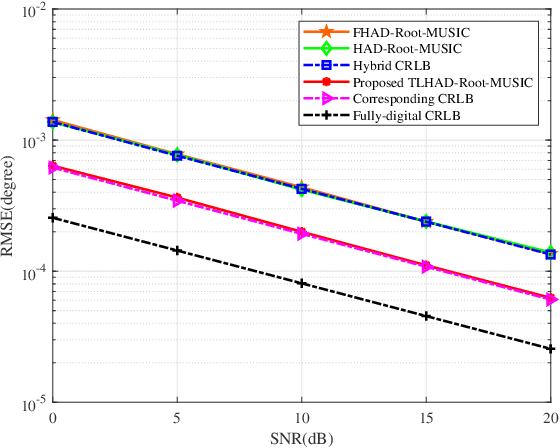
Abstract:Due to a high spatial angle resolution and low circuit cost of massive hybrid analog and digital (HAD) multiple-input multiple-output (MIMO), it is viewed as a key technology for future wireless networks. Combining a massive HAD-MIMO with direction of arrinal (DOA) will provide a high-precision even ultra-high-precision DOA measurement performance approaching the fully-digital (FD) MIMO. However, phase ambiguity is a challenge issue for a massive HAD-MIMO DOA estimation. In this paper, we review three aspects: detection, estimation, and Cramer-Rao lower bound (CRLB) with low-resolution ADCs at receiver. First, a multi-layer-neural-network (MLNN) detector is proposed to infer the existence of passive emitters. Then, a two-layer HAD (TLHAD) MIMO structure is proposed to eliminate phase ambiguity using only one-snapshot. Simulation results show that the proposed MLNN detector is much better than both the existing generalized likelihood ratio test (GRLT) and the ratio of maximum eigen-value (Max-EV) to minimum eigen-value (R-MaxEV-MinEV) in terms of detection probability. Additionally, the proposed TLHAD structure can achieve the corresponding CRLB using single snapshot.
DOA Estimation Using Massive Receive MIMO: Basic Principles, Key Techniques, Performance Analysis, and Applications
Sep 01, 2021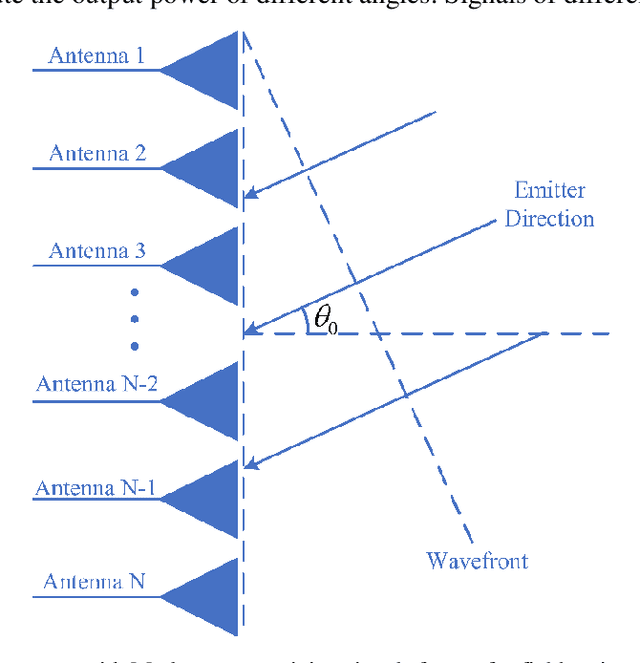

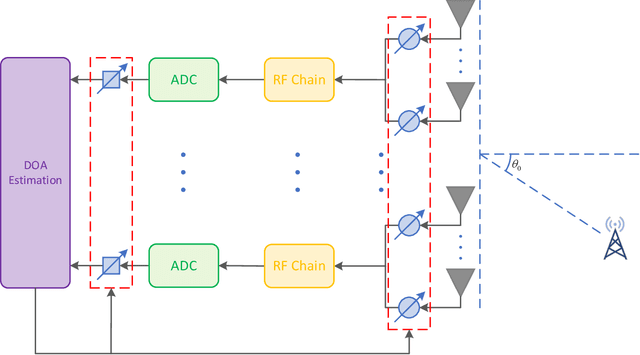

Abstract:As massive multiple-input multiple-output (MIMO) becomes popular, direction of arrival (DOA) measurement has been made a real renaissance due to the high-resolution achieved. Thus, there is no doubt about DOA estimation using massive MIMO. The purpose of this paper is to describe its basic principles and key techniques, to present the performance analysis, and to appreciate its engineering applications. It is anticipated that there are still many challenges in DOA estimation using massive receive MIMO, such as high circuit cost, high energy consumption and high complexity of the algorithm implementation. New researches and breakthroughs are illustrated to deal with those problems. Then, a new architecture, hybrid analog and digital (HAD) massive receive MIMO with low-resolution ADCs, is presented to strike a good balance among circuit cost, complexity and performance. Then, a novel three-dimensional (3D) angle of arrival (AOA) localization method based on geometrical center is proposed to compute the position of a passive emitter using single base station equipped with an ultra-massive MIMO system. And, it can achieve the Cramer-Rao low bound (CRLB). Here, the performance loss is also analyzed to quantify the minimum number of bits. DOA estimation will play a key role in lots of applications, such as directional modulation, beamforming tracking and alignment for 5G/6G.
High-performance Passive Eigen-model-based Detectors of Single Emitter Using Massive MIMO Receivers
Aug 03, 2021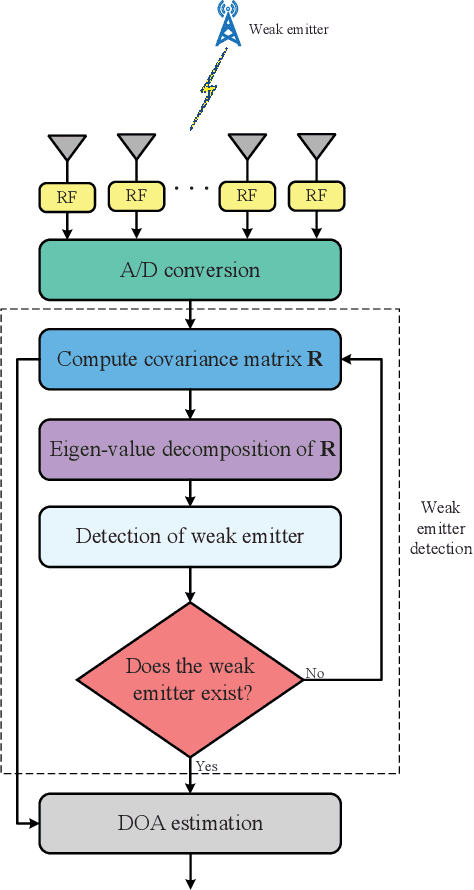
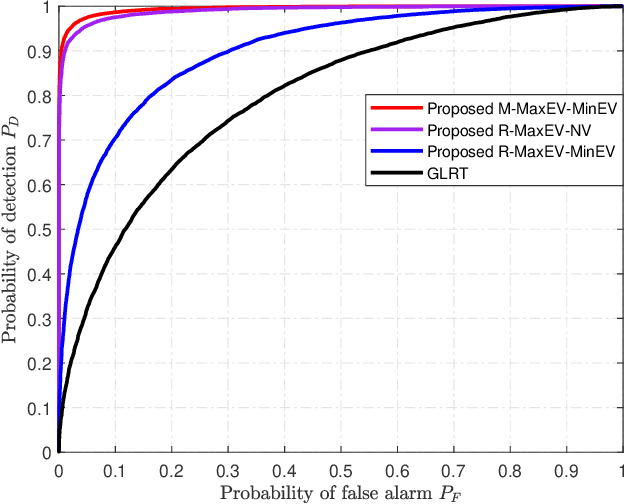
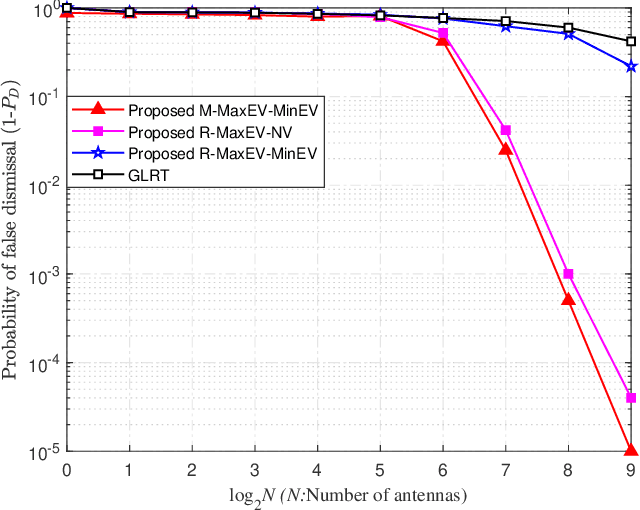
Abstract:For a passive direction of arrival (DoA) measurement system using massive multiple input multiple output (MIMO), it is mandatory to infer whether the emitter exists or not before performing DOA estimation operation. Inspired by the detection idea from radio detection and ranging (radar), three high-performance detectors are proposed to infer the existence of single passive emitter from the eigen-space of sample covariance matrix of receive signal vector. The test statistic (TS) of the first method is defined as the ratio of maximum eigen-value (Max-EV) to minimum eigen-value (R-MaxEV-MinEV) while that of the second one is defined as the ratio of Max-EV to noise variance (R-MaxEV-NV). The TS of the third method is the mean of maximum eigen-value (EV) and minimum EV(M-MaxEV-MinEV). Their closed-form expressions are presented and the corresponding detection performance is given. Simulation results show that the proposed M-MaxEV-MinEV and R-MaxEV-NV methods can approximately achieve the same detection performance that is better than the traditional generalized likelihood ratio test method with false alarm probability being less than 0.3.
DOA Estimation for Hybrid Massive MIMO Systems using Mixed-ADCs: Performance Loss and Energy Efficiency
Jul 21, 2021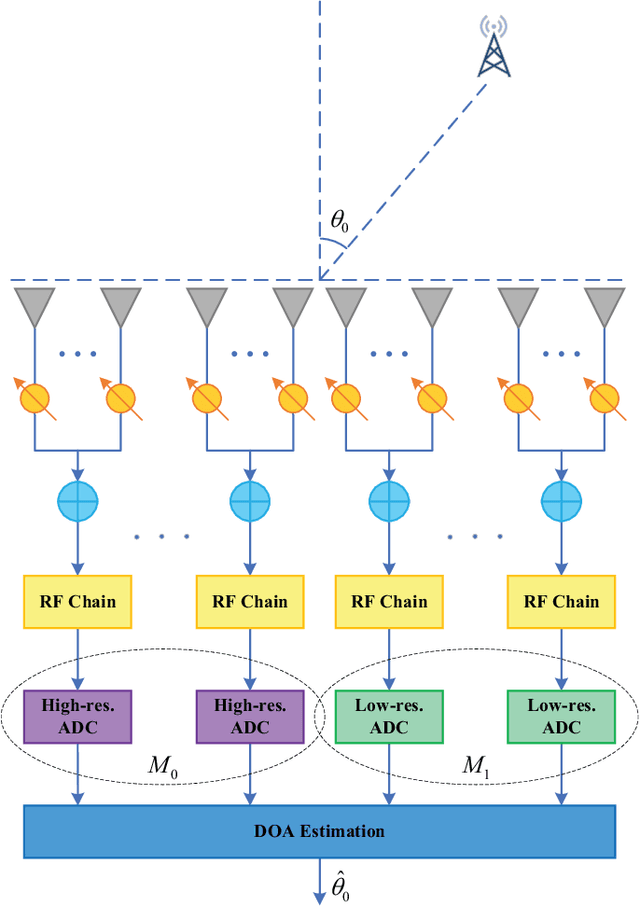
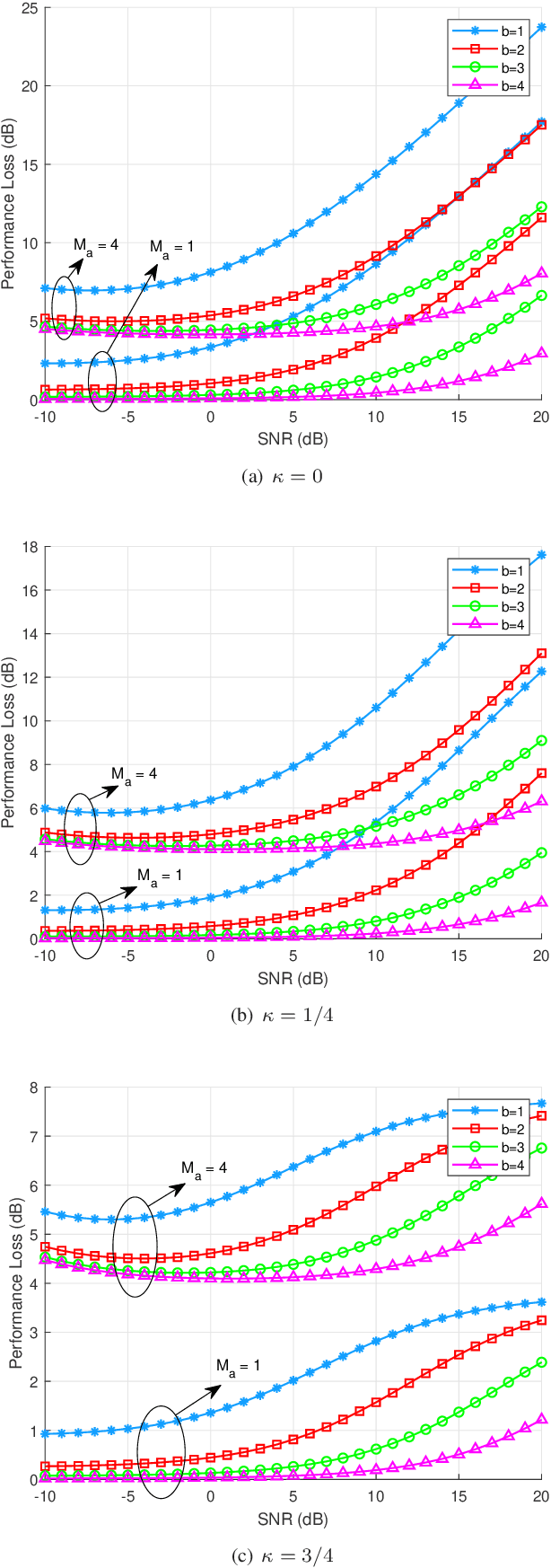
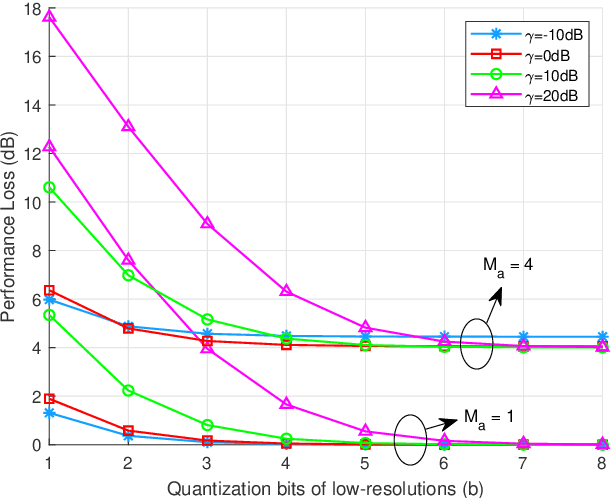
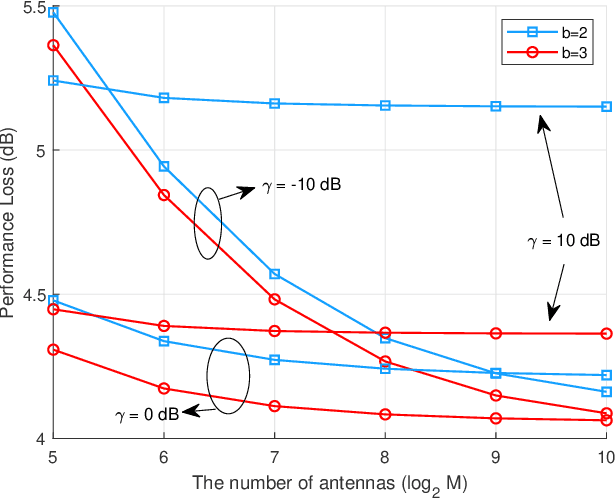
Abstract:Due to the power consumption and high circuit cost in antenna arrays, the practical application of massive multipleinput multiple-output (MIMO) in the sixth generation (6G) and future wireless networks is still challenging. Employing lowresolution analog-to-digital converters (ADCs) and hybrid analog and digital (HAD) structure is two low-cost choice with acceptable performance loss. In this paper, the combination of the mixedADC architecture and HAD structure employed at receiver is proposed for direction of arrival (DOA) estimation, which will be applied to the beamforming tracking and alignment in 6G. By adopting the additive quantization noise model, the exact closedform expression of the Cramer-Rao lower bound (CRLB) for the HAD architecture with mixed-ADCs is derived. Moreover, the closed-form expression of the performance loss factor is derived as a benchmark. In addition, to take power consumption into account, energy efficiency is also investigated in our paper. The numerical results reveal that the HAD structure with mixedADCs can significantly reduce the power consumption and hardware cost. Furthermore, that architecture is able to achieve a better trade-off between the performance loss and the power consumption. Finally, adopting 2-4 bits of resolution may be a good choice in practical massive MIMO systems.
Fast Ambiguous DOA Elimination Method of DOA Measurement for Hybrid Massive MIMO Receiver
May 14, 2021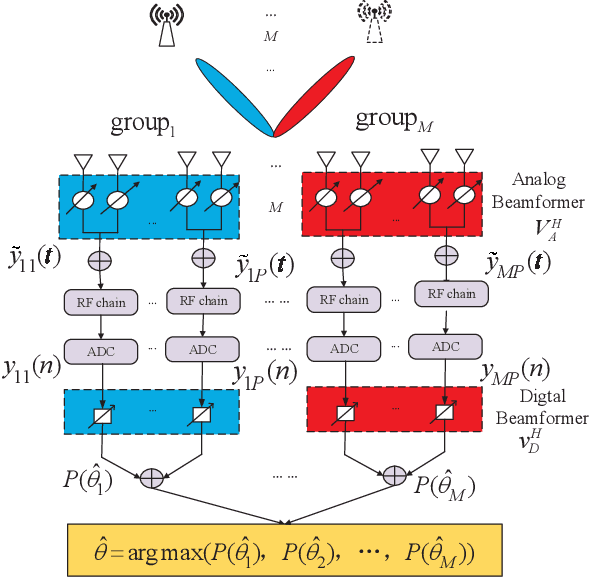

Abstract:DOA estimation for massive multiple-input multiple-output (MIMO) system can provide ultra-high-resolution angle estimation. However, due to the high computational complexity and cost of all digital MIMO systems, a hybrid analog digital (HAD) structure MIMO was proposed. In this paper, a fast ambiguous phase elimination method is proposed to solve the problem of direction-finding ambiguity caused by the HAD MIMO. Only two-data-blocks are used to realize DOA estimation. Simulation results show that the proposed method can greatly reduce the estimation delay with a slight performance loss.
On Performance Loss of DOA Measurement Using Massive MIMO Receiver with Mixed-ADCs
Apr 06, 2021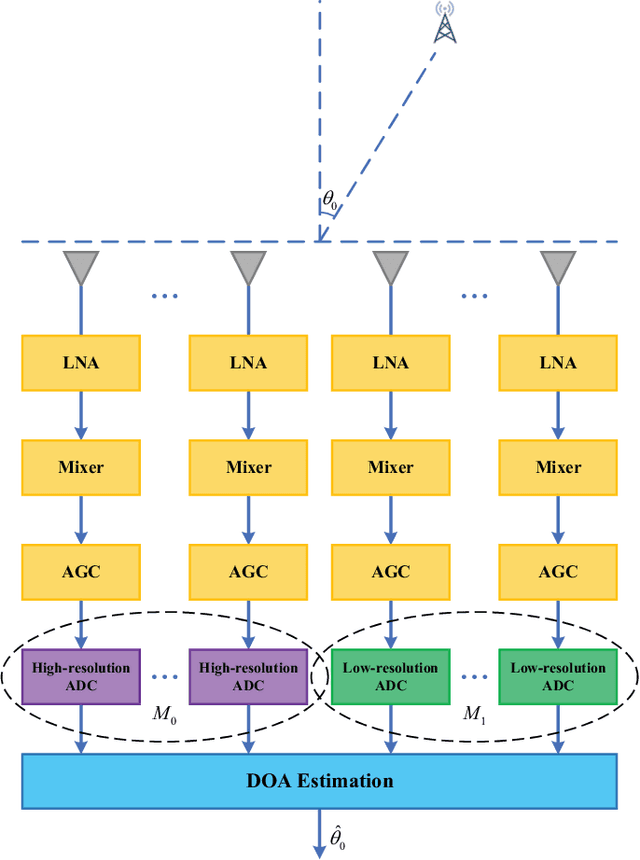
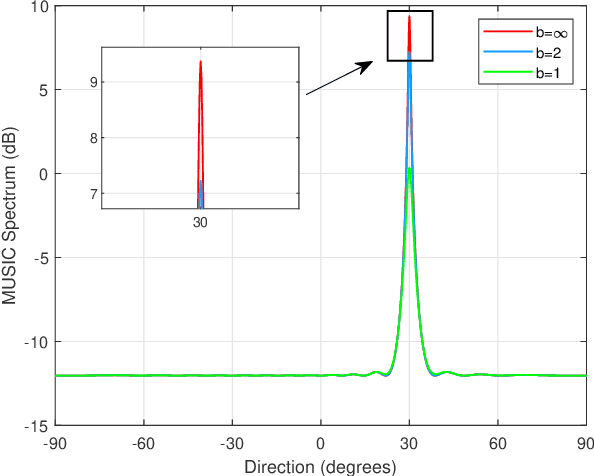
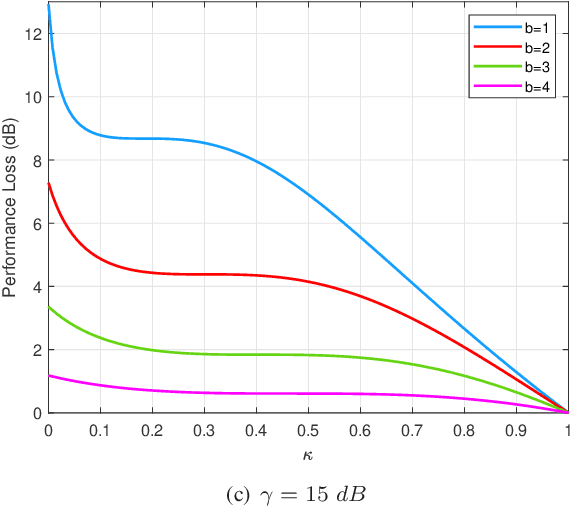
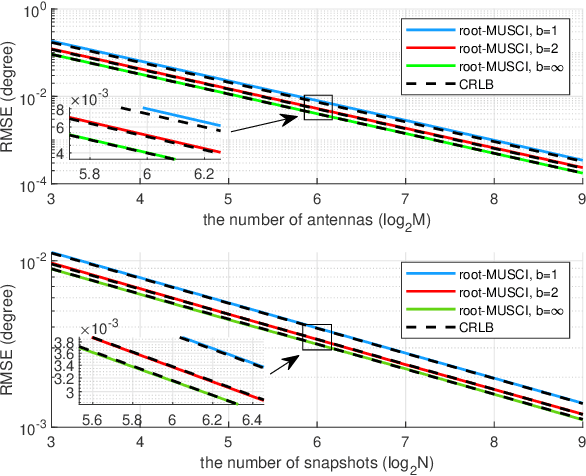
Abstract:High hardware cost and high power consumption of massive multiple-input and multiple output (MIMO) are still two challenges for the future wireless communications including beyond 5G. Adopting the low-resolution analog-to-digital converter (ADC) is viewed as a promising solution. Additionally, the direction of arrival (DOA) estimation is an indispensable technology for beam alignment and tracking in massive MIMO systems. Thus, in this paper, the performance of DOA estimation for massive MIMO receive array with mixed-ADC structure is first investigated, where one part of radio frequency (RF) chains are connected with high-resolution ADCs and the remaining ones are connected with low-resolution ADCs. Moreover, the Cramer-Rao lower bound (CRLB) for this architecture is derived based on the additive quantization noise model approximation for the effect of low-resolution ADCs. Then, the root-MUSIC method is designed for such a receive structure. Eventually, a performance loss factor and the associated energy efficiency factor is defined for analysis in detail. Simulation results find that a mixed-ADC architecture can strike a good balance among RMSE performance, circuit cost and energy efficiency. More importantly, just 1-4 bits of low-resolution ADCs can achieve a satisfactory performance for DOA measurement.
 Add to Chrome
Add to Chrome Add to Firefox
Add to Firefox Add to Edge
Add to Edge